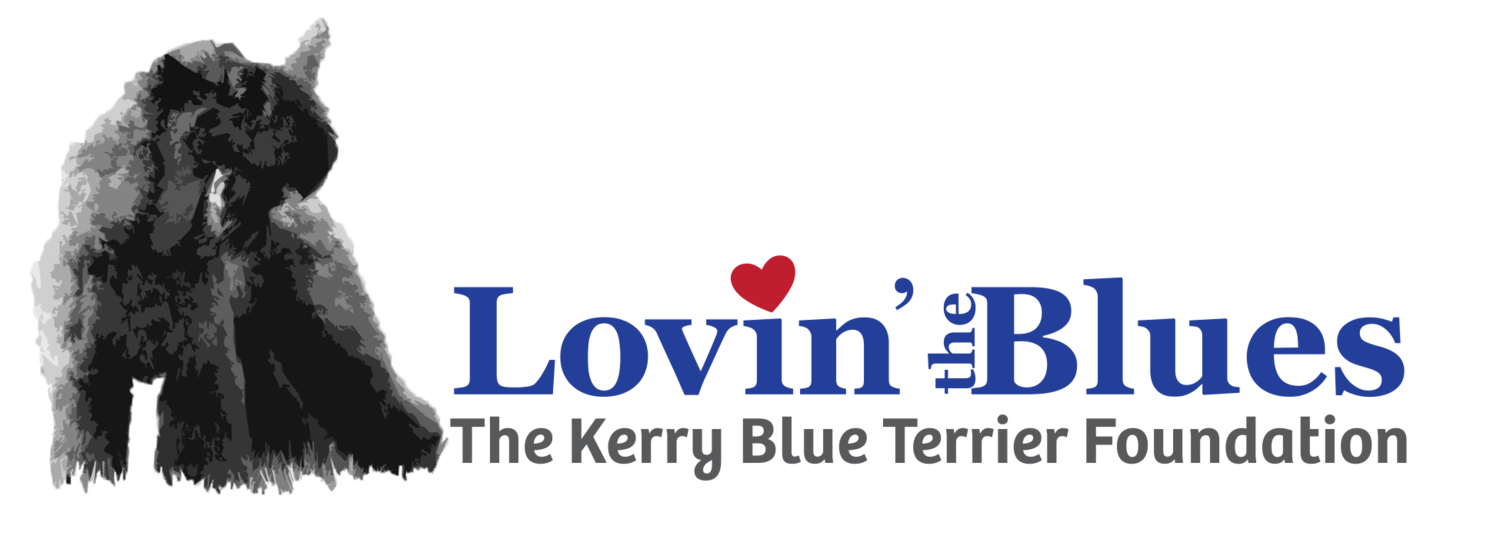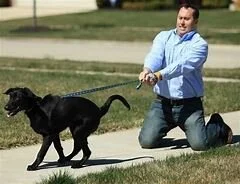Way too excited to get and go for a walk??
A well-trained Kerry Blue Terrier knows how to walk on a leash without tugging on your arms. A Kerry Blue Terrier bouncing off the end of the leash like a kangaroo, on the other hand, may be amusing to look at, but no fun if you're the one desperately hanging on to the other end of the leash, and it's not safe for a Kerry Blue to always be trying to break free of human control. And compared to many dogs, Kerries are small, but they are strong!
Dogs pull because they're more interested in the sights and scents around them than in you. Your job, trainers state, is to train your dog to be aware of and respect your leadership at the other end of the leash. The result? A true companion with whom walks are stress-free and a chance to enjoy the outdoors while being proud of your Kerry family member.
To teach your companion not to pull, you need collar, leash, and a treats. Use a leash that's 4-6 feet long; this will give your dog enough room for you to have the leash hang loosely when your dog is walking appropriately with you, but limits the range of your dog's personal space in case you need to reinforce the proper behavior. First, give your dog a change to burn off some energy, through chasing a ball or other play, so he has a better chance of concentrating on his new tasks and processing his training. When your dog -- and you -- are in a good frame of mind for learning something new without getting frustrated, you're ready to get to work. Starting in your home or yard, make sure there aren't too many distractions - Kerry Blue Terriers can be easily stimulated by their environments, and you don't need other people and dogs (especially loose dogs) in the vicinity right now. Be sure you have room to walk freely in a number of directions. Having to negotiate through furniture groupings or yard features is good --- these give you a chance to show your Kerry who goes first, and help him learn to follow your body in negotiating other objects. Besides, trainers warn: if your dog doesn't respect your leadership in the home, she won't respect you out on a walk!
A common approach to leash training is the "stop, start, and change direction" method. Holding the leash firmly, start walking. Just before he gets to the end of the leash, say your dog's name and "easy," make an about-turn to your right, and walk in the opposite direction. Make your turn with determination, trainers affirm. Don't look back, and don't worry about your pup; he'll quickly catch up. As your pup scampers to catch up with you, tell him what a clever boy he is, and give him a treat. Before you know it, he'll be ahead of you again, and you'll have to repeat the procedure.The first few times you try this, you'll be a little late - your dog is already leaning into his collar. Try it again. Concentrate on your pooch and anticipate when you have to make the turn. Always give Fido a chance to respond by saying, "Fido, easy" before you make the turn. You need to repeat this sequence several times over the course of a few training sessions until your dog understands that you don't want him to pull. Your goal is to teach him to walk within the perimeter of his leash without pulling.
Another trainers' tip: Help your dog understand that there is a difference between free play time, and walking on the leash. If your dog has opportunities to run and play off-leash in a secure area, he will be more accepting of the idea that when on leash, he has to show good leash behavior.
Finally, remember to have reasonable expectations for your dog's learning process, and reasonable expectations for your own! If your Kerry Blue isn't showing progress after a few consistent sessions, it might be time to seek professional help. Be cautious of trainers who recommend harsh methods such prong collars; for most dogs, harsh methods and painful reinforcement of behavior are considered generally less effective, and less translatable to other good behaviors, than positive reinforcement and "making the right thing easy."


